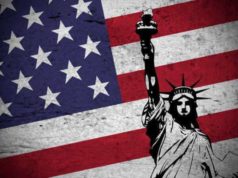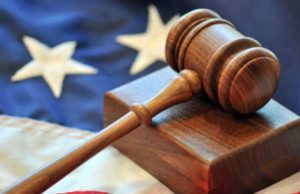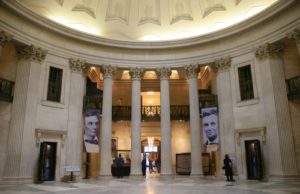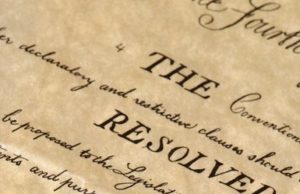Table of Contents

John Roberts: The Accidental Chief Justice
John Roberts is the 17th Chief Justice of the United States Supreme Court, appointed by President George W. Bush in 2005. He succeeded William Rehnquist after his death in September of that year, becoming the youngest Chief Justice since John Marshall in 1801. Since then, Roberts has been involved in many of the most significant legal cases in recent American history. In this article, we will explore Roberts’ life, career, and legal decisions, as well as his lasting impact on the US legal system and politics.
Early Life and Career
John Glover Roberts Jr. was born on January 27, 1955, in Buffalo, New York. He was raised in Long Beach, Indiana, and attended Harvard College, where he earned a degree in history in 1976. He then attended Harvard Law School, receiving his law degree in 1979.
After graduation, Roberts clerked for Judge Henry Friendly of the United States Court of Appeals for the Second Circuit and for Associate Justice William Rehnquist of the Supreme Court. He then worked in the Reagan administration, eventually becoming the Principal Deputy Solicitor General in the Office of the Solicitor General.
After the Reagan administration, Roberts worked in private practice before being appointed to the US Court of Appeals for the District of Columbia Circuit by President George W. Bush in 2003. He served on the court for just two years, until his appointment as Chief Justice.
Career as Chief Justice
Roberts was nominated to be Chief Justice of the Supreme Court by President George W. Bush in 2005. At the confirmation hearings, Roberts impressed many with his intelligence and wit and was confirmed by a vote of 78-22.
As Chief Justice, Roberts has been involved in many of the most significant legal cases of the past two decades. He has earned a reputation as a judicial conservative, but he has also shown a willingness to break with conservative orthodoxy on occasion.
One of the most significant cases Roberts has been involved in was National Federation of Independent Business v. Sebelius (2012), which dealt with the constitutionality of the Affordable Care Act. Roberts surprised many by affirming the constitutionality of the law, writing the majority opinion.
Roberts has also been involved in significant cases dealing with issues such as voting rights, same-sex marriage, and campaign finance. In recent years, he has been seen as an influential swing vote on the court, as many of the decisions have been decided by a 5-4 vote.
Legal Philosophy
Roberts’ approach to the law can be described as one that emphasizes restraint and adherence to precedent. In speeches and interviews, he has often expressed his belief in the importance of judicial modesty and a limited role for the courts in the American political system.
At the same time, Roberts has also argued that the judiciary has an essential role to play in protecting individual rights and ensuring that the other branches of government act within the bounds of the Constitution. In speeches and writings, he has emphasized the importance of the rule of law and the role of judges as impartial arbiters of legal disputes.
Interesting Facts
- Roberts is the youngest Chief Justice since John Marshall, who was appointed in 1801 at the age of 45.
- He is the first Chief Justice to preside over impeachment proceedings against a president since William Rehnquist in 1999.
- Roberts has said that he admires Justice Oliver Wendell Holmes Jr., who served on the Supreme Court from 1902 to 1932.
- He is known for his sharp wit and sense of humor, which he has displayed on several occasions, including during oral arguments.
- Roberts was a member of the conservative Federalist Society and is seen as an ally of the organization.
- His confirmation hearings in 2005 were among the most closely watched and closely scrutinized in recent memory, with many senators asking him to weigh in on controversial issues such as abortion and gay rights.
- In 2009, Roberts suffered a seizure while at his vacation home in Maine. He was hospitalized briefly, but doctors determined that the seizure was not related to any underlying medical condition.
- Roberts has often expressed his admiration for Chief Justice John Marshall, who he considers one of the greatest judges in American history.
- He is known for his strict adherence to court rules and decorum, a fact that has earned him praise from some quarters but criticism from others.
- Roberts is a devout Catholic and attends mass regularly. He has been known to speak publicly about his faith and its influence on his approach to the law.
Legacy
John Roberts’ legacy is one that is still being written. As Chief Justice, he has been involved in many of the most significant legal cases of the past two decades and has earned a reputation as a thoughtful and intellectually rigorous judge.
Roberts’ legal philosophy, which emphasizes judicial restraint and adherence to precedent, has shaped many of his decisions on the court. His unexpected decision in National Federation of Independent Business v. Sebelius (2012) stands as one of the most significant examples of his willingness to break with conservative orthodoxy when necessary.
In the years to come, Roberts will continue to play an influential role in the shaping of American law and politics. His tenure as Chief Justice has been marked by controversy and contention, but he remains one of the most respected and influential judges in the country.
Conclusion
John Roberts’ tenure as Chief Justice of the United States Supreme Court has been characterized by a commitment to judicial restraint and adherence to precedent. He has been involved in many of the most significant legal cases of the past two decades and has been praised for his intelligence, wit, and intellectual rigor.
As his legacy continues to develop, Roberts is sure to remain an influential figure in American law and politics, and his ideas about the role of the judiciary and the importance of the Constitution will continue to shape the legal landscape for years to come.
John Roberts is the 17th and most current Chief Justice of the United States Supreme Court. He was nominated by former president George Bush to fill this position after the passing of William Rehnquist. John G. Roberts had previously worked for William Rehnquist as a law clerk before assuming the position as Attorney General during the Reagan administration.
He continued working for the Reagan Administration as well as the Bush administration in the Justice Department. In 2003 he assumed the role as a judge for the D.C. Circuit until he was nominated to serve as Associate Justice of the Supreme Court. It was the passing of William Rehnquist that lead him to the position that he currently holds today. Some early decisions by John Roberts included views on the Controlled Substances Act. The case of Gonzales v. Oregon was the first major case conducted under John Roberts’ tenure as Chief Justice.
The Supreme Court decided that the United States Attorney General had no right to apply the Federal Controlled Substances Act to physicians who prescribed drugs under the conditions of the Oregon State law for assisting with suicide to individuals who were terminally ill. In another the ruling held a couple of months later, John G. Roberts wrote a decision regarding the Rumsfeld v. Forum for Academic and Institutional Rights. Under this ruling, he declared all college institutions that accept Federal funding to allow the recruitment of the military to be conducted on campus.
This was despite the disapproval of Clinton’s Don’t Ask Don’t Tell policy, to which many universities objected. John Roberts’ first dissent was during the Georgia v. Randolph case of 2006. In this case, the majority of other Supreme Court members made the decision to prohibit police from invading and searching the home of more than one occupant. They tried to pass a law that made it unlawful to search the home of an occupant that consented to the search while the other disapproved. However, John Roberts dissented to this case and criticized the majority’s opinion as inconsistent to prior case law.
Another major ruling under Roberts was the support of certain abortion restrictions.
During the Gonzales v. Carhart ruling, the Supreme Court passed the Partial-Birth
Abortion Ban Act which prohibits the termination of any late-term fetus through
intact dilation and extraction. John G. Roberts also enforces the Equal Protection Clause where he opposes schools that assign students according to race, maintaining schools that are integrated. The court reviewed two cases involving the school district programs that relied on race to decipher which schools were fit for certain children.
The Court ruled that these practices involved racial discrimination and were in violation of the Constitution’s Equal Protection Clause. John Roberts’ current term as Chief Justice is
under constant speculation. The current views of President Obama are said to conflict with the beliefs of Chief Justice John Roberts. Many conclude that his current role in the judicial system has made an impact on the administrative effects of the Court. One of his current concerns is having the Court apply a reverse to decreasing its public records.
























